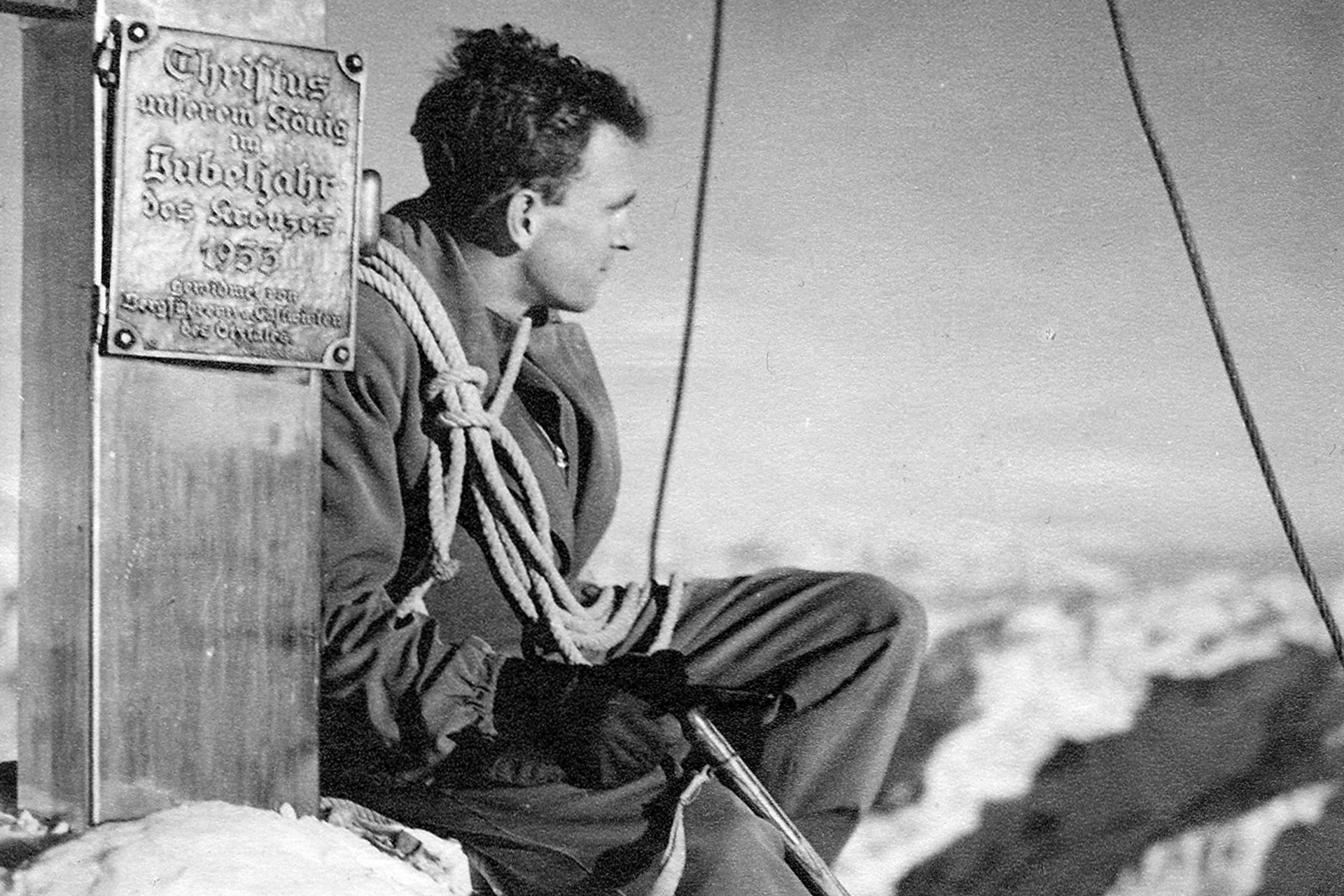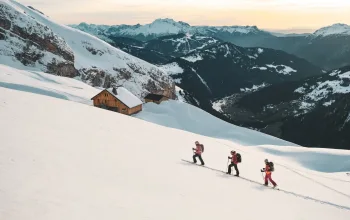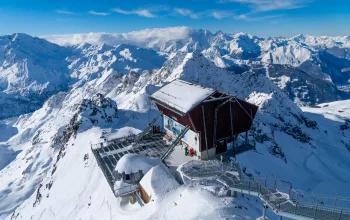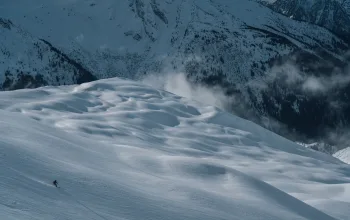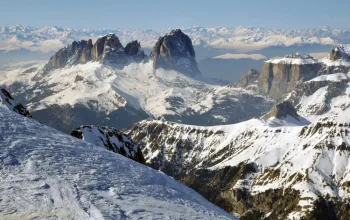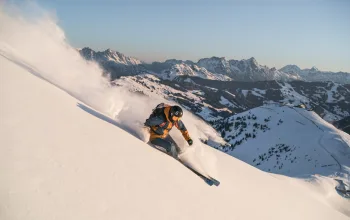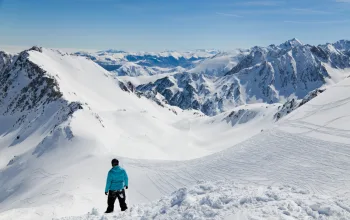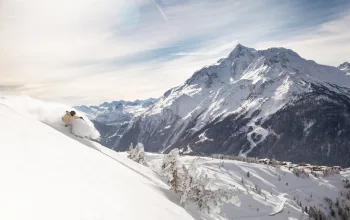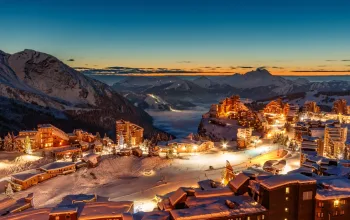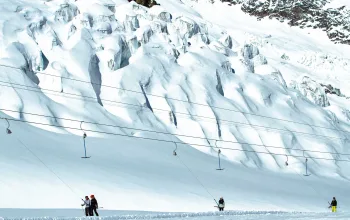It’s 1934. Adolf Hitler has just seized total power in Germany, claiming the title of Führer of the Third Reich. Joseph Stalin is planning the infamous Great Purge of his enemies in the Soviet Union, while in the UK, industry is still reeling from the 1929 depression and Oswald Mosley’s black shirted fascists are on the rise. The songs of Bing Crosby and films of Clark Gable are a distraction, but polarising tensions are bubbling up across Europe. The outlook is bleak—these are the embryonic political rumblings that will ultimately lead to a world war of unimaginable loss.
"Despite the gathering storm clouds of WWII, a fresh-faced maverick is planning a grand adventure"
But in inter-war London, amidst the Christmas trees and festive lighting of December 1934, a fresh-faced maverick is planning a grand adventure. Walter Ingham, aged just 20, with only £25 to his name, leaves his humble bedsit in Kensington to board a train set for the snowy mountains of Austria. Alongside him are 15 paying guests similarly eager to escape the city and experience the crisp, rarefied air of the Alps. Little do they realise it right now, but this is a momentous occasion—the birth of an iconic ski company and the early beginnings of the winter sports holiday boom in Britain.
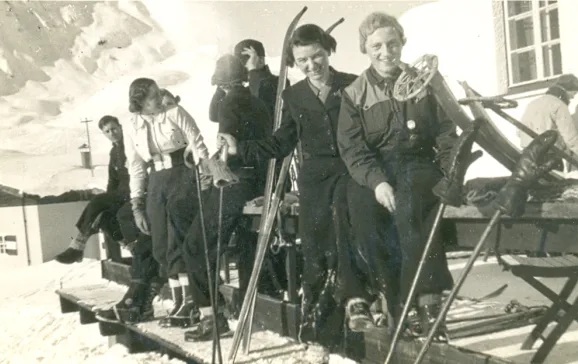
It’s one hell of a coup for a young man. Just months earlier, Ingham was floundering into adulthood, bored and unfulfilled with his job as a salesman for typewriter manufacturer Remington. But now he’s decided to follow a different path: a bold, audacious and adventurous one. After two years of mind-numbing salesmanship, he has ditched the nine-to-five and become a strange hybrid—half ski bum, half entrepreneurial visionary. To some he’s a savvy businessman, seizing on a gap in the market and offering a new, innovative, type of holiday to British tourists. To others he’s simply a hardcore ski enthusiast, more concerned with hitting the slopes than making money. Either way, it’s a life-changing pivot of remarkable bravery.
You could say that adventure ran in the Ingham family. His parents Frank and Lillian had eloped from the industrial Lancashire town of Burnley to the cultured Austrian capital of Vienna— another courageous big life decision. Young Walter was born in the city in May 1914 and spent his formative years close to the mountains. To his parents’ dismay, he showed far more passion for skiing, hiking, climbing and sailing than academic pursuits, and so—perhaps—he was always destined for something grander than the corporate grind of a salesman.
“'Very soon, I found that selling typewriters gave no job satisfaction—and no skiing,' he wrote to a friend"
His dad had lined up the job at Remington, no doubt thinking it would give Walter a respectable profession, and a solid start in life. But “very soon, I found that selling typewriters gave no job satisfaction—and no skiing," he wrote to a friend after moving back to the UK in 1932. The mountains were calling, and he had to go.
In an impressive display of entrepreneurial flair, he paid for an advert in The Telegraph, pitching a “private ski party to ski the Tyrol—14 days for 12 guineas”. If he could just get 15 sign-ups, he worked out, he’d bag himself a free rail ticket and hotel room—a cheat code for getting himself back to the slopes. It worked, and, soon, Walter found himself walking to the train station to escort his first guests on the long journey to Schoenburg, just south of Innsbruck.
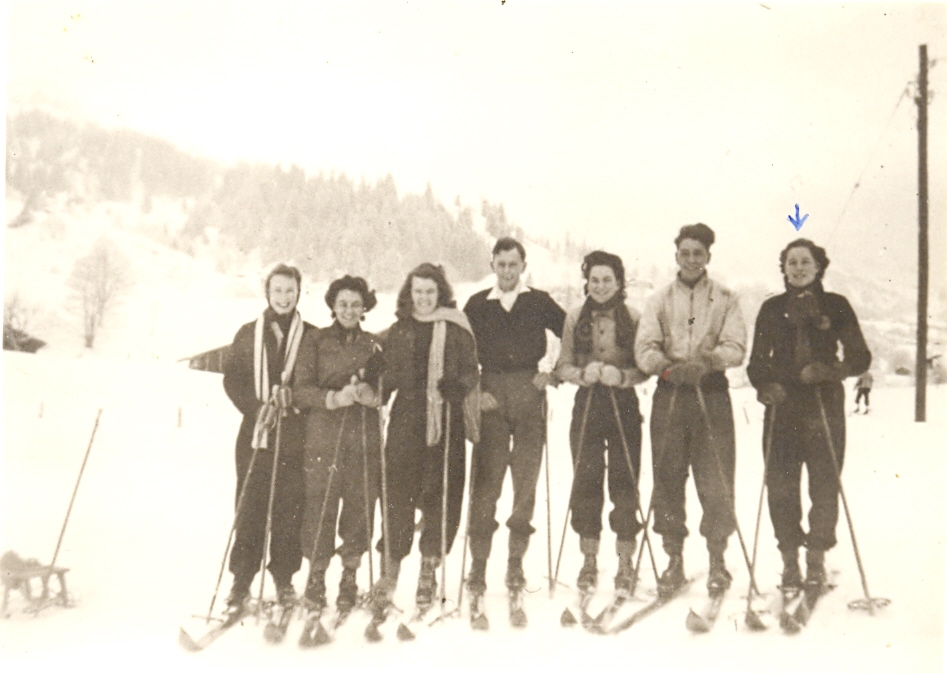
Following in Ingham’s ski tracks
Ninety years later and I’m on a similar path, ambling down to the Eurostar terminal at London St Pancras. The contrast between our experiences, however, is stark. Few details are known about Walter’s debut 1934 journey to the Alps, but presumably it was all steam engines, wood-panelled carriages, impeccably-dressed ticket collectors and connecting ferries across the channel. As for entertainment, perhaps Ingham was reading that year’s hit novel, Agatha Christie’s Murder on the Orient Express?
My 2024 journey is a little more high-tech. It’s checking emails on my iPad and listening to Spotify while sipping on a Pret A Manger vanilla latte, as we race at 100mph below the sea through the Channel Tunnel—a feat of engineering that would have seemed like science-fiction in the 1930s.

Back in Ingham’s era, trains were the only way to get to the Alps. Now, 90 years later, they’re enjoying an unexpected renaissance. Despite the dominance of aeroplanes for decades, legitimate climate concerns are increasingly persuading skiers to travel by train. It takes the best part of 12 hours to get from London to St Anton, via Paris and Zurich, but the time passes easily as you’re whisked through the French countryside on TGVs that reach speeds of up to 300km/h.
The next day, from the 2,185m top of the Galzig peaks, I set off down a long, cruisy blue run —blessed with a recent dump of lovely white stuff—towards the village of St Cristoph. As the cold alpine air kisses my cheeks and the edges of my skis crunch satisfyingly into the piste, I contemplate how different this experience, right now, is to Ingham’s inaugural 1934 adventure.
"I’m warmed by my 850-fill power goose down Rab jacket. Ingham would have worn nothing more than a thick woollen jumper"
So much is so different. My bindings are precision-engineered and state-of-the-art; Walter’s would’ve been rudimentary metal cables atop basic wooden skis. I’m warmed by the yarn wizardry of Helly Hansen synthetic base-layers and the chevron-shaped baffles of my 850 fill power goose down Rab jacket; Ingham would have worn nothing more than baggy Norwegian pants paired with a thick woollen jumper.
While I’ve just ridden the Vallugabhan aerial tramway to the resort's highest point at 2,811 m, expending zero energy in the process, Ingham had the arduous task of hiking up the slopes with his skis slung over his shoulder; and while I have 85 ski lifts and 300km of groomed pistes at my disposal, old Walt just had a somewhat untamed, wild mountainside to contend with—the Galzigbahn, St Anton’s first gondola, wasn’t built until 1937.
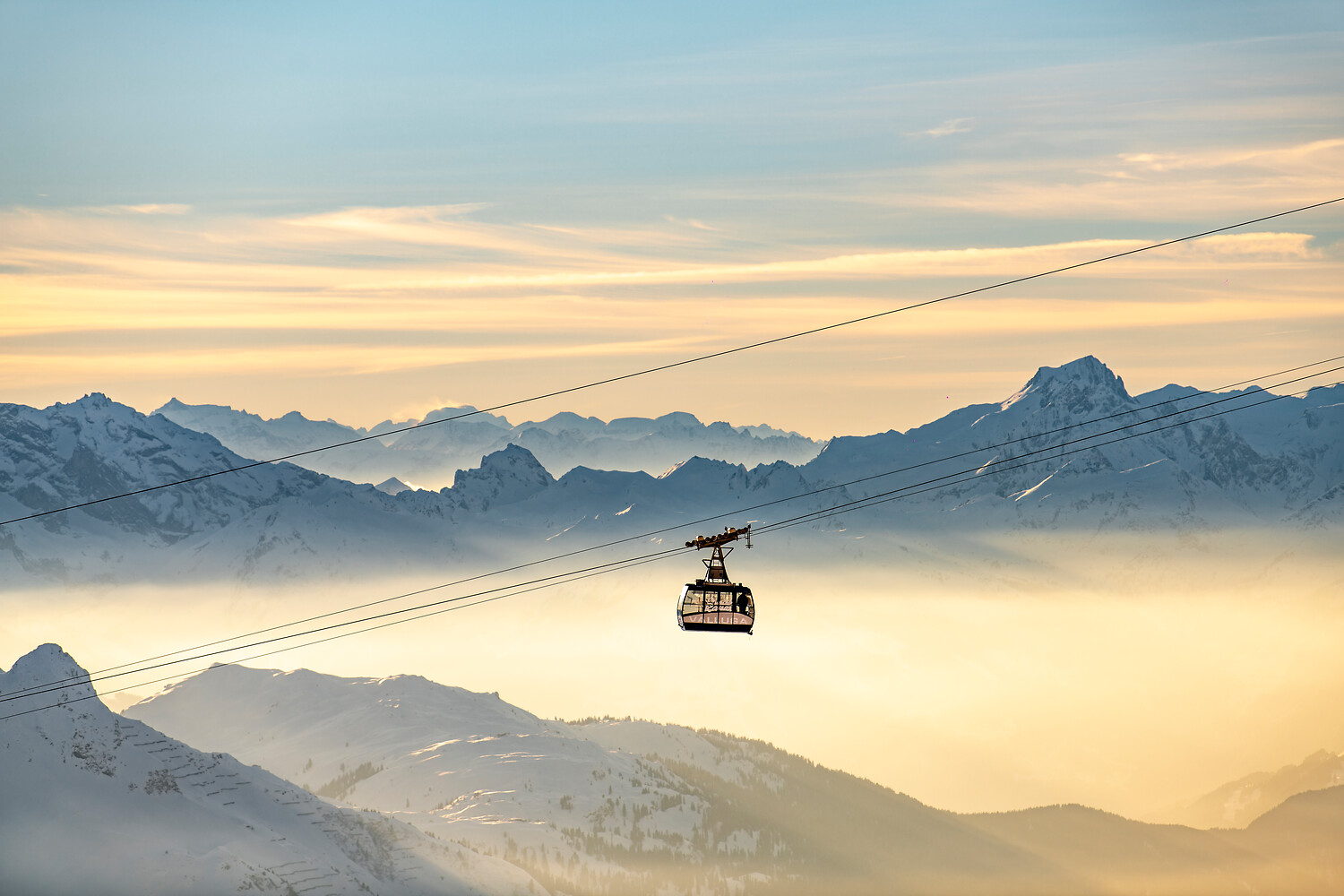
Progress and setbacks
“My grandmother tells me about how different St Anton used to be, it has transformed so much”, explains Katharina Laimer, of the St Anton-am-Arlberg Tourism Association, who grew up here. In Ingham and her grandmother’s day, the resort was still what estate agents would call up-and-coming. The famed Ski Club Arlberg and Skischule Arlberg both existed already, but tourism was fledgling and development of the mountains was restrained.
In 1934 there were 1,000 beds in St Anton; 90 years later there are 13,000. During his inaugural trip, Ingham was probably one of just a handful of foreign visitors to the resort; now more than a million visit the Arlberg ski area annually, lured by the superb ski terrain, reliable snow and lively après scene [read our full resort guide to St. Anton here - Ed.].
"What would the man himself make of the modern world, and where his company is now?"
Some of the advances of the past nine decades seem overwhelmingly positive; others arguably less so. In the plus column, you have better equipment, enhanced safety, easier movement about the mountain and the diversification of skiing from an elite sport to the middle classes and beyond—a shift that Ingham, and the company he founded, helped engineer in the post-war period. On the minus side: crowded slopes, ugly infrastructure and, of course, the carbon impact of millions of skiers gallivanting across Europe.
Ingham rode the waves of all of these changes and more in the course of his long career. After the runaway success of his inaugural 1934 mission, he put on another five trips to Kuhtai, Obergurgl, Gerlos and elsewhere that winter, boosting his coffers from £25 to £80. The Second World War halted things for him, but only temporarily. Ultimately his force of character was unstoppable, and he built not only a successful business, but a lasting brand name. By the time he sold the company to Hotelplan in 1962, Inghams employed 80 full-time staff and carried 14,000 people abroad each year.
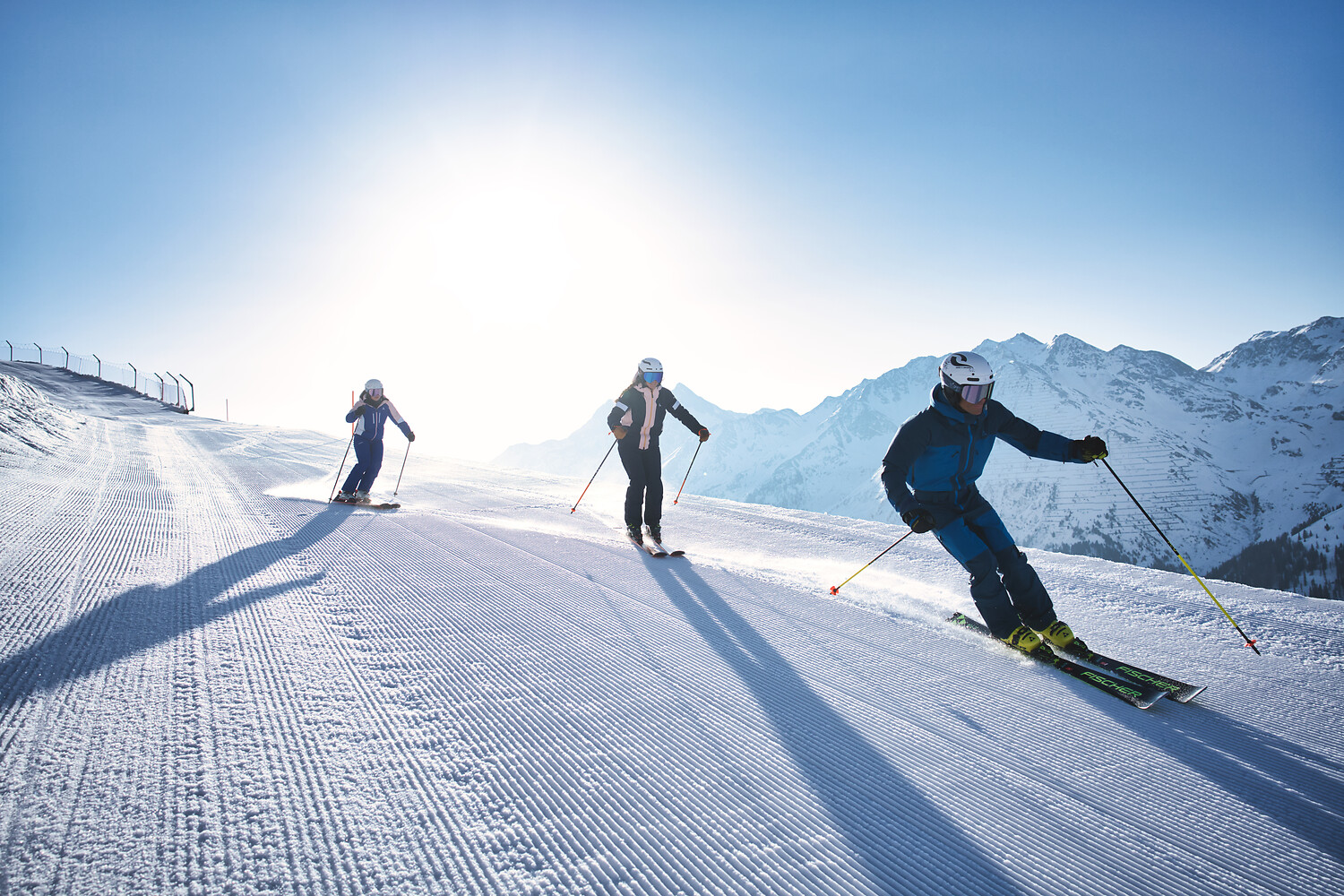
What would the man himself make of the modern world, and where his company is now? We can’t know for sure. But John Mansell, managing director of Inghams, believes he would have been in favour of their recent environmental initiatives, and their efforts to carry more guests, like me, by train: “As well as reflecting on the past, it’s important that we also focus on our commitment to the future. We are working hard to reduce our emissions and doing everything we can to protect the mountains.”
It’s a sentiment you can imagine Ingham, who loved nothing more than the mountains, approving of wholeheartedly. If anyone would want to see skiing carry on long into the 21st century and beyond, it was him. As I jump on another ski lift, marvelling at the modern engineering, I can almost picture the old man standing in the corner, nodding his support—and then reaching for his skis and boots, and heading out into the snow. After all, some things never change. Whether it’s 1934 or 2024, the real joy in it all is the skiing itself.
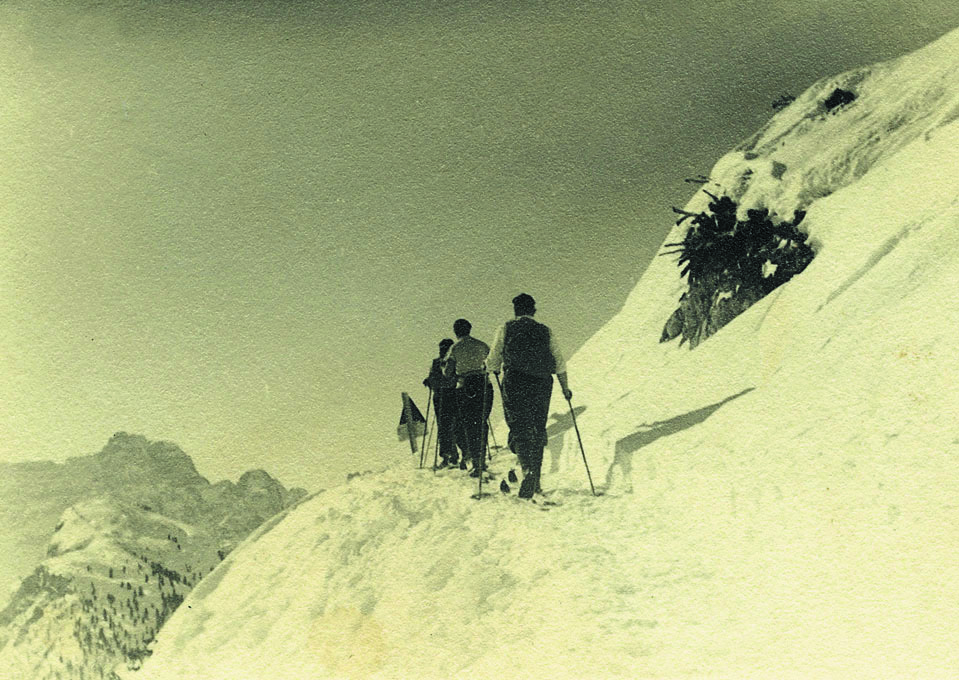
James Forrest was a guest of Inghams (inghams.co.uk), staying at Chalet Albona (Mountain Lodge) in St Anton. Holidays start from £1,119 per person.


